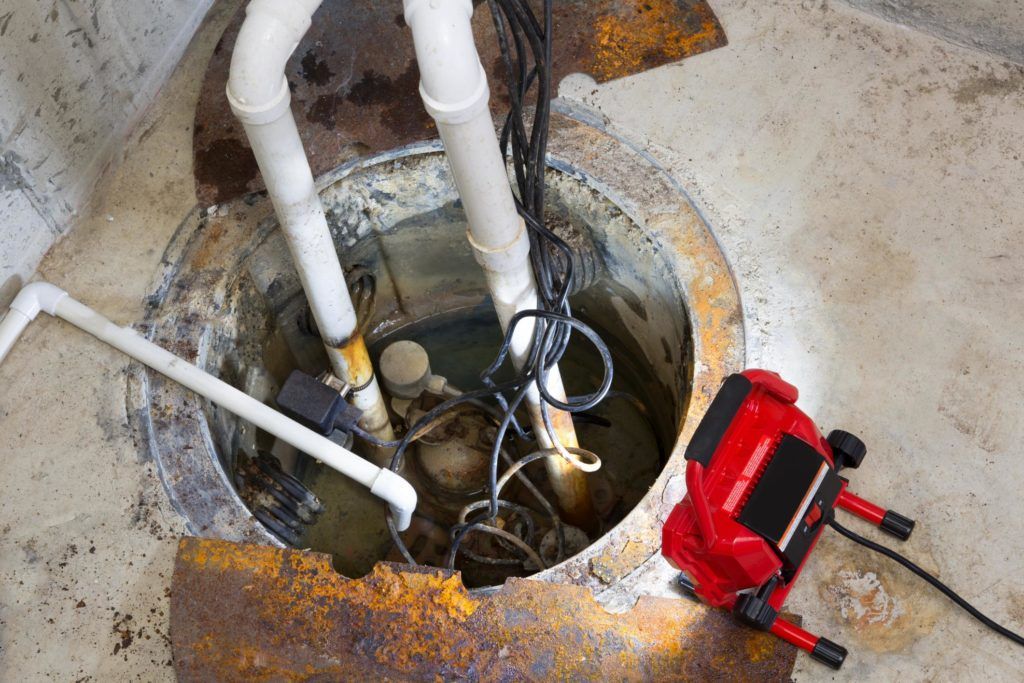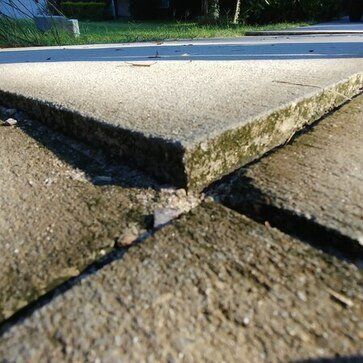How to Install a Sump Pump: Step-by-Step Guide for a Dry Basement
Install a Sump Pump: Protect Your Basement from Water Damage
Installing a sump pump is a game-changer when it comes to protecting your basement from flooding and moisture. If you're tired of dealing with basement leaks or worrying about foundation damage, this step-by-step guide is for you. In this blog, we'll break down the entire sump pump installation process, providing you with practical tips, essential tools, and advice on whether to go the DIY route or hire a professional. By the end, you'll have the knowledge to keep your basement dry and your home safe, no matter the weather.

Understanding Sump Pumps
A sump pump is a vital tool for keeping your basement dry and protecting your home's foundation. It's especially important in areas prone to flooding or where groundwater collects. Whether you're dealing with basement leak repair, planning to waterproof your foundation, or preventing future water damage, a sump pump can be an essential part of your home's defense system.
What is a Sump Pump?
A sump pump is a device installed in a sump pit at the lowest point of your basement. Its primary function is to prevent water from accumulating and damaging your foundation by pumping excess water away from your home. The best sump pump consists of two major types: submersible and pedestal, each with its own advantages. For basements prone to flooding or water seepage, sump pumps are a must-have solution.
How Sump Pumps Work to Prevent Flooding
A sump pump is designed to collect excess water, whether from heavy rains, groundwater, or leaks. Once the water reaches a certain level, the pump automatically activates and directs the water out of your home through a discharge pipe, protecting your foundation and basement. It keeps the area dry, reducing the need for costly foundation repair or basement leak repair.
When Do You Need a Sump Pump?
Many homeowners wonder, "When do I need a sump pump?" If your home is prone to flooding, experiences frequent moisture in the basement, or shows signs of foundation damage, installing a sump pump is critical. Water accumulation not only harms your basement but can also compromise the structural integrity of your home, requiring you to seek help from a foundation repair company. If you're considering sump pump installation, it’s important to take action before extensive water damage occurs.
Common Signs You Need a Sump Pump Installation
Here are some common indicators that you may need a sump pump:
- Water pooling in your basement after rain
- Persistent dampness or mold growth
- Cracks in the foundation or walls
- A musty odor in your basement
These signs point to potential foundation damage, and a sump pump installation may be the best solution to avoid further water damage.
Flood-Prone Areas and Water Management Solutions
Living in a flood-prone area increases the risk of water-related damage to your home’s foundation. Installing a sump pump in combination with other waterproofing foundation techniques, such as installing French drains or using moisture barriers, can provide maximum protection. Proactive measures will save you from costly basement leak repair and foundation issues.
Essential Tools and Materials for Sump Pump Installation
Before you begin, gather the necessary tools and materials for sump pump installation. You'll need:
- A sump pump (submersible or pedestal)
- PVC pipes for drainage
- A drill
- A level
- Gravel
- A sewage pump if dealing with wastewater
These items will ensure your sump pump installation goes smoothly, whether you decide to tackle it yourself or opt for professional sump pump installation services.
Gathering the Right Equipment
Having the correct equipment is crucial for a successful installation. You'll need to select the best sump pump for your home, considering factors like the size of your basement, the volume of water you expect to handle, and whether a backup system (like the best sump pump battery backup) is necessary.
Choosing the Right Sump Pump for Your Home
Choosing the right sump pump depends on several factors:
- Submersible vs. Pedestal: Submersible pumps are installed below water, making them quieter, while pedestal pumps are placed above the pit and are easier to maintain.
- Battery Backup: The best sump pump should come with a backup system to ensure continuous operation during power outages. Consider investing in a sump pump and battery backup or the best sump pump battery backup for extra protection.
- Sump Pump Installation Cost: Costs vary based on pump type and complexity of installation. Evaluate both the price of the pump and any potential costs of sump pump installation services.
Preparing Your Basement for Installation
Proper preparation is essential for a seamless installation. Start by clearing the area where your sump pump will be installed. Remove any obstacles and ensure the area is dry and ready for work.
Clearing the Area for Your Sump Pump Pit
The first step is to clear any debris or furniture from the area and ensure it's ready for digging. Make sure the space is dry, so no water interferes with the sump pump installation process.
Marking and Drilling the Sump Pit Location
Next, mark the location of your sump pit. The ideal spot should be at the lowest point in your basement, where water naturally pools. Use a level to ensure the marking is accurate before drilling. Once marked, drill the pit deep enough to accommodate both the sump pump and basin.
Step-by-Step Sump Pump Installation Process
Now that you're prepared, it’s time to install the sump pump. Follow these detailed steps to complete the installation.
Step 1: Digging the Sump Pit
Dig a pit roughly 2 feet deep and 18 inches wide. The pit should be large enough to house the sump pump and leave room for gravel at the bottom to improve drainage. Make sure the pit is level before moving on to the next step.
Step 2: Installing the Basin
Place the sump pump basin into the pit, ensuring it's level and stable. The basin will hold the sump pump, so it must be secure. Fill any gaps between the basin and the edges of the pit with gravel for better drainage.
Step 3: Installing the Sump Pump
Place the sump pump inside the basin, making sure it sits properly. Connect the sump pump to a reliable power source. If you're using a sewage pump or a backup system, now is the time to connect those as well. Check that the pump is positioned correctly to avoid any future malfunctions.
Step 4: Connecting the Discharge Pipe
Install the discharge pipe, which will carry water away from your home. Ensure the pipe slopes downward, allowing gravity to assist in moving the water out efficiently. This pipe should lead away from the foundation to prevent reabsorption.
Step 5: Testing Your Sump Pump System
After everything is installed, test the system. Pour water into the pit to simulate flooding, and check if the sump pump activates and drains the water correctly. This step is crucial in determining whether any adjustments need to be made before calling the installation complete.
Maintaining Your Sump Pump
Regular maintenance is crucial to prolong the life of your sump pump. Check the system periodically to ensure it's functioning properly, especially during rainy seasons.
Routine Maintenance Tips for Optimal Performance
Inspect your sump pump monthly to check for debris or clogs in the discharge pipe. Clean the basin and test the pump regularly by adding water to the pit. If the sump pump fails to activate, consider getting a professional inspection.
Troubleshooting Common Sump Pump Issues
Sometimes, the sump pump may malfunction due to blockages or a faulty float switch. If you experience these issues, clean the debris or replace the switch. For more serious problems, contact a foundation repair company or a sump pump installation service.
Sump Pump Backup Systems
A reliable backup system is crucial for ensuring your sump pump works during power outages. There are two main types of backup systems to consider:
Why You Need a Backup Pump
Backup pumps are essential to ensure your basement stays dry even when the power goes out. Water damage can happen quickly, so having the best sump pump battery backup or a water-powered system will give you peace of mind.
Battery Backup vs. Water-Powered Backup Options
Battery-powered backups are a popular choice because they provide hours of power. However, water-powered backup systems are another option, as they rely on water pressure instead of electricity, making them a reliable choice during power outages.
Professional Installation vs. DIY: Which is Best for You?
Deciding between professional sump pump installation and a DIY project depends on your skill level and budget.
Benefits of Hiring a Professional Installer
Hiring a professional ensures the job is done correctly and quickly. An expert will have the experience needed to avoid costly mistakes and ensure the system works efficiently from the start.
Cost Comparison: Professional vs. DIY Installation
Professional sump pump installation costs can vary, but typically range between $1,000 to $3,000. If you're considering DIY, factor in the cost of materials, your time, and any potential mistakes. Although DIY can save money upfront, professional installation services may offer better long-term value by ensuring the job is done right.
By following this step-by-step guide, you'll have the knowledge to install a sump pump and keep your basement dry. Whether you decide to go the DIY route or hire a foundation repair company for professional sump pump installation, taking action will protect your home from water damage and ensure your foundation remains intact for years to come.



